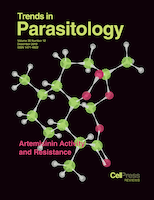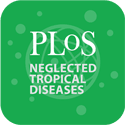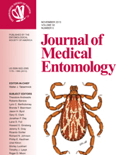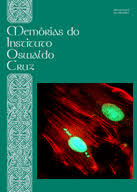
JOURNAL OF THE AMERICAN MOSQUITO CONTROL ASSOCIATION
Scope & Guideline
Unveiling insights to protect public health from mosquito threats.
Introduction
Aims and Scopes
- Vector Biology and Ecology:
Research on the biology, ecology, and behavior of mosquito species, including their interactions with the environment and other species. This includes studies on habitat preferences, breeding sites, and seasonal population dynamics. - Surveillance and Monitoring:
Development and evaluation of methodologies for monitoring mosquito populations and their associated pathogens. This includes the use of traps, surveillance technologies, and epidemiological assessments to track mosquito-borne disease outbreaks. - Insecticide Resistance Management:
Investigations into the mechanisms and prevalence of insecticide resistance in mosquito populations. This research aims to inform management practices and the development of new control strategies to mitigate resistance. - Control Strategies and Efficacy Studies:
Evaluation of various mosquito control methods, including chemical, biological, and environmental interventions. Research focuses on the efficacy and nontarget effects of these control strategies. - Public Health Implications:
Research that connects mosquito control efforts with public health outcomes, particularly in relation to vector-borne disease transmission and community health education.
Trending and Emerging
- Innovative Surveillance Techniques:
Emerging themes in the use of technology for mosquito surveillance, such as the application of drones and advanced trapping methods, are gaining traction. This reflects the need for more efficient and effective monitoring systems in vector control. - Genomic and Molecular Studies:
Increasing research on the genetic and molecular aspects of mosquitoes, including studies on resistance genes and pathogen interactions. This trend is critical for developing targeted control strategies and understanding disease dynamics. - Climate Change Impact Studies:
Research focusing on the effects of climate change on mosquito populations and the transmission of mosquito-borne diseases is becoming more prevalent. This theme highlights the importance of understanding environmental changes in vector ecology. - Community Engagement and Education:
A growing emphasis on community participation in mosquito control efforts and public education about vector-borne diseases. This approach recognizes the role of public awareness in effective control strategies.
Declining or Waning
- Historical Data Analysis:
There has been a noticeable decrease in studies focused solely on historical data analysis of mosquito populations and diseases, likely due to a shift towards more immediate, applied research that addresses current challenges in mosquito control. - Laboratory-Based Studies:
Fewer publications seem to focus on purely laboratory-based studies without field applications. The trend is shifting towards integrated studies that incorporate both lab and field data to provide more comprehensive insights. - Invasive Species Studies:
Research specifically targeting invasive mosquito species appears to be less frequent, possibly indicating that such studies have become more integrated into broader ecological and epidemiological research.
Similar Journals

Journal of Infection and Public Health
Championing Open Access to Groundbreaking Health ResearchJournal of Infection and Public Health is a premier open-access journal published by ELSEVIER SCIENCE LONDON, dedicated to advancing knowledge in the fields of infectious diseases, public health, and environmental health. Since its inception in 2008, this esteemed journal has become a cornerstone of research dissemination, especially after transitioning to an open-access model in 2017, allowing wider accessibility to groundbreaking studies. With an impressive impact factor and ranking in the Q1 category for Infectious Diseases and Public Health as of 2023, the journal stands at the forefront of scientific inquiry, boasting a Scopus rank of #22 out of 665 in Public Health, underscoring its influence and reach in the academic community. Researchers, professionals, and students alike will find the journal's rich repository of peer-reviewed articles invaluable for ongoing education and practice in a rapidly evolving field. For contributing to the global understanding of health dynamics, Journal of Infection and Public Health is a vital resource, inviting scholars to explore, engage, and contribute to the crucial discussions shaping our world.

TRENDS IN PARASITOLOGY
Unveiling the complexities of host-parasite interactions.TRENDS IN PARASITOLOGY is a premier academic journal published by CELL PRESS, focusing on the dynamic field of parasitology and infectious diseases. With an ISSN of 1471-4922, this esteemed journal is recognized for its high impact within the research community, boasting a Q1 ranking in both the Infectious Diseases and Parasitology categories as of 2023. This places it among the top-tier journals in the field, as evidenced by its remarkable Scopus rankings, where it ranks #3 out of 79 in Parasitology and #29 out of 344 in Infectious Diseases. Spanning over two decades of scholarly contributions from 2001 to 2024, TRENDS IN PARASITOLOGY emphasizes the latest advancements, challenges, and innovative methodologies in parasitology, making it an invaluable resource for researchers, healthcare professionals, and students alike. With an increasing focus on open access initiatives, this journal not only promotes widespread dissemination of knowledge but also encourages collaboration across the global scientific community. Whether you are investigating novel interventions, exploring parasite evolution, or understanding host-pathogen interactions, TRENDS IN PARASITOLOGY remains at the forefront of research, driving forward the understanding of parasitic diseases.

PLoS Neglected Tropical Diseases
Driving innovation in the fight against tropical diseases.PLoS Neglected Tropical Diseases is a leading Open Access journal published by the Public Library of Science since 2007, dedicated to advancing research and awareness in the field of neglected tropical diseases. With an impressive 2023 impact factor reflected in its Q1 ranking in categories such as Infectious Diseases, Pharmacology, Toxicology and Pharmaceutics, as well as Public Health, Environmental and Occupational Health, this journal is recognized as a vital resource for researchers, healthcare professionals, and students alike. It is positioned prominently within the academic community, ranked in the top tier of journals according to Scopus, demonstrating its significant contribution to knowledge and innovation in global health. With its commitment to disseminating free and accessible scientific insights, PLoS Neglected Tropical Diseases plays a crucial role in addressing pressing health challenges and promoting a deeper understanding of diseases often overlooked in mainstream health discourse. For further information and to access its rich repository of articles, please visit the journal's website.

JOURNAL OF MEDICAL ENTOMOLOGY
Cultivating expertise in the study of insect-borne diseases.JOURNAL OF MEDICAL ENTOMOLOGY, published by Oxford University Press, is a prestigious journal dedicated to advancing the field of medical entomology, a critical area of study that explores the intersection of insect biology and public health. With an ISSN of 0022-2585 and an E-ISSN of 1938-2928, the journal features high-quality research articles and reviews that delve into the impacts of insect vectors on infectious diseases and parasitology, making it an essential resource for professionals and researchers alike. The journal has garnered significant recognition in the academic community, currently ranking in the top quartiles: Q2 in Infectious Diseases, Q1 in Insect Science, Q2 in Parasitology, and Q1 in Veterinary (miscellaneous), reflecting its influential contributions to these disciplines. With its comprehensive coverage of topics spanning across medical entomology and veterinary sciences, authors and readers will find a platform rich in valuable insights and data. The journal's long-standing history, dating back to its inception in 1964, ensures a legacy of excellence that continues through 2024 and beyond. While it does not currently offer open access, researchers are highly encouraged to engage with its content to foster a deeper understanding of the crucial role that insects play in human and animal health.

MEMORIAS DO INSTITUTO OSWALDO CRUZ
Empowering Scholars with Open-Access Medical Discoveries.MEMORIAS DO INSTITUTO OSWALDO CRUZ, published by the esteemed FUNDACO OSWALDO CRUZ in Brazil, serves as a vital platform for the dissemination of research in the fields of medicine and microbiology. With its inception dating back to 1909 as an open-access journal, it has made significant strides in promoting the understanding of health-related topics and infectious diseases across its diverse readership. This journal is recognized for its contribution to the scholarly community, boasting a Q2 category in Medicine (miscellaneous) and a Q3 rating in Microbiology (medical) as per the 2023 quartiles. Located in Rio de Janeiro, the journal not only embraces a rich historical context but also engages with contemporary issues in public health. Researchers and professionals in related fields will find valuable insights and data that underscore the significance of scientific collaboration in tackling global health challenges. With access to its archives spanning multiple decades, MEMORIAS DO INSTITUTO OSWALDO CRUZ remains a key resource for students and researchers alike as they endeavor to expand their knowledge and contribute to future innovations in health science.

EXPERIMENTAL AND APPLIED ACAROLOGY
Transforming Acarology Knowledge into Practical SolutionsEXPERIMENTAL AND APPLIED ACAROLOGY is a leading international journal that serves as a premier platform for the dissemination of cutting-edge research in the fields of Ecology, Insect Science, and Medical applications related to acarology. Published by Springer, this esteemed journal has been pivotal in advancing our understanding of mite-related science since its inception in 1985, and it anticipates continued publication until 2024. With an impressive ranking in the Q2 quartile across multiple categories, including Ecology (Rank #154/461) and Insect Science (Rank #42/181), it firmly establishes itself as a significant contributor to the scientific community. Although not an Open Access journal, its rigorous peer-review process ensures high-quality publication standards, appealing to researchers, professionals, and students alike. Aiming to bridge gaps between experimental research and practical applications, EXPERIMENTAL AND APPLIED ACAROLOGY plays a crucial role in enhancing knowledge and discoveries related to acarology, highlighting its vital importance in ecology and health sciences.

JOURNAL OF VECTOR ECOLOGY
Pioneering Insights in Ecology and EvolutionJOURNAL OF VECTOR ECOLOGY, published by SOC VECTOR ECOLOGY, serves as a pivotal platform for the dissemination of research in the interdisciplinary fields of ecology, evolution, behavior, and systematics. Established in 1996 and operating from the United States, this esteemed journal boasts an impressive Q2 ranking in Ecology as of 2023, showcasing its significant contribution to the scientific understanding of vector ecology and its implications on public health and environmental management. The journal is indexed in Scopus, ranking #341 out of 721 in Agricultural and Biological Sciences focusing on Ecology, Evolution, Behavior and Systematics and #222 out of 461 in Environmental Science, highlighting its relevance and impact within these domains. Although it does not currently offer open access options, the JOURNAL OF VECTOR ECOLOGY remains committed to advancing knowledge and fostering collaboration among researchers, professionals, and students dedicated to vector analysis and control strategies.

CLINICAL MICROBIOLOGY AND INFECTION
Exploring Innovations in MicrobiologyCLINICAL MICROBIOLOGY AND INFECTION is a leading journal published by Elsevier Science Ltd, dedicated to advancing the field of infectious diseases and clinical microbiology. With its ISSN 1198-743X and E-ISSN 1469-0691, this esteemed journal has maintained its influential presence since 1995, showcasing high-impact research that addresses critical issues in the diagnosis, treatment, and prevention of infections. Ranked in the Q1 quartile for Infectious Diseases, Medicine (miscellaneous), and Microbiology (medical) categories, and boasting impressive Scopus rankings of #12 and #7 respectively, it sits at the forefront of scientific inquiry in these disciplines. Although it is not an Open Access journal, it provides comprehensive access options for institutions and individuals, ensuring the dissemination of vital research findings. As the field of clinical microbiology continues to evolve, CLINICAL MICROBIOLOGY AND INFECTION remains an essential resource for researchers, clinicians, and students aiming to stay informed on the latest developments and breakthroughs in understanding infectious diseases.

Russian Journal of Biological Invasions
Unraveling the complexities of biological invasions.Russian Journal of Biological Invasions, published by PLEIADES PUBLISHING INC, is a pioneering periodical dedicated to advancing the understanding of biological invasions in diverse ecological contexts. With an ISSN of 2075-1117 and an E-ISSN of 2075-1125, the journal primarily serves the scientific community in the fields of ecology, evolution, behavior, and systematics, boasting a respectable Q3 categorization in Ecology for 2023 and ranking 559 out of 721 in its domain in Scopus. The journal's coverage spans from 2010 to 2024, addressing critical issues such as the ecological impacts of invasive species and offering insights into management strategies. Though not an Open Access journal, it provides invaluable resources for researchers, professionals, and students keen on tackling the challenges posed by biological invasions. Its contributions significantly enrich the discourse in ecological research and conservation efforts, making it an essential resource for those seeking to comprehend and mitigate the effects of invasive species on ecosystems across the globe.

VECTOR-BORNE AND ZOONOTIC DISEASES
Pioneering studies that shape the future of health security.VECTOR-BORNE AND ZOONOTIC DISEASES is a prominent journal dedicated to advancing research in the fields of infectious diseases, microbiology, and virology, published by Mary Ann Liebert, Inc. With a rich history spanning from 2001 to 2024, this journal plays a critical role in disseminating cutting-edge research and insights regarding diseases transmitted by vectors and zoonotic pathogens. It has achieved notable rankings, including Q2 in the Infectious Diseases category and Q3 in both Microbiology and Virology as of 2023. The journal's emphasis on quality and relevance is further underscored by its established position—ranked 151st in Infectious Diseases and within the 43rd percentile in Virology according to Scopus. Although not an open-access journal, the publication ensures that its findings reach a broad audience of researchers, professionals, and students dedicated to tackling the challenges posed by these critical health issues. By providing a platform for innovative studies and discussions, VECTOR-BORNE AND ZOONOTIC DISEASES remains an essential resource for those at the forefront of disease research and public health strategies.